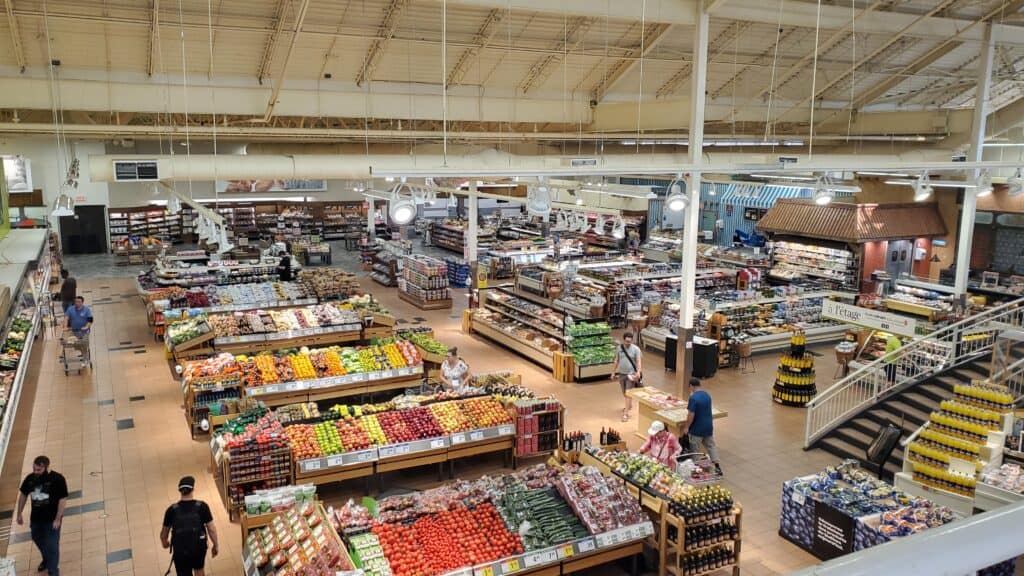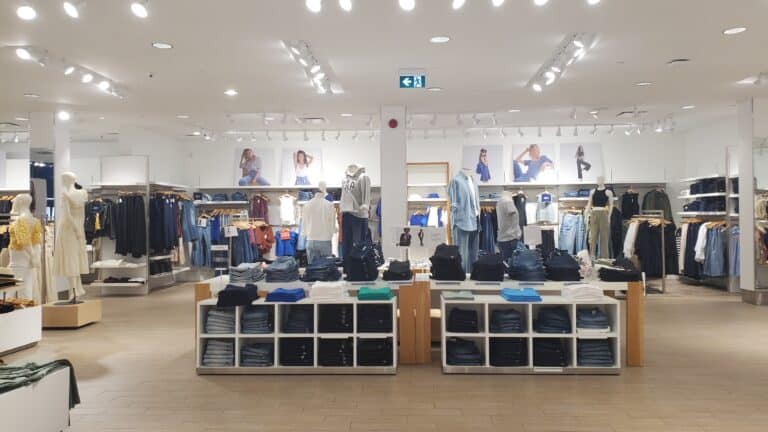How long does grocery shopping take

Did you just search in Google how long does grocery shopping take someone to go in and out?
I have also googled the same thing to see if I was the only one thinking that way.
First let me share with you some statistics:
- The Time Use Institute reports that the average person spends 41 minutes per shopping trip in the grocery store. (NASDAQ)
- Cashiers may be faster than self-checkout for items like produce or those without barcode stickers because cashiers often know the produce codes by memory. (Oprah.com)
I spend no more than 25 minutes grocery shopping if I am alone. This time will vary if I am with a friend or family.
Before I go shopping, I always make a shopping list to guide me while I navigate the aisle of the supermarket.
Making a shopping list helps me to visualize where the items I need are located. I then go in, take all I need, and get out as fast as possible.
Key Takeaways
Summary of factors influencing how long grocery shopping takes
1. Personal Habits
2. Store Size and Layout
3. Shopping List Length
4. Time standing in line at check out
5. Time of day and day of the week
6. Familiarity with the store
7. Number of shoppers in the store
8. Coupon or discount usage
9. Decision-making and browsing habits
10. Special dietary or health requirements
11. Shopping with children or companions
12. Payment method and technology used
Factors influencing how long does grocery shopping take
Numerous factors that will determine how long one person spends grocery shopping. Let’s explore them one after the other.
How long does it take the average person to go grocery shopping?
1. Personal Habits
Our individual shopping habits play a big part in how long we linger in the store. For some, they like to go up and down every aisle, inspecting labels and scrutinizing product choices.
Others like me adopt a more focused approach, adhering to a shopping list.
There is another group of people who enjoy looking for discounted items. They will take their time to look around without any hurry to go out.
Are you one of them?
2. Store Size and Layout
The size and layout of the grocery store you frequent can be a pivotal factor.
Larger supermarkets may require more time to navigate due to their expansive floor plans, while smaller neighborhood markets might expedite the process.
Familiarity with a store’s layout can also significantly reduce shopping time, as you’ll be less likely to get lost in the aisles.
The time you spend in a supermarket might be more if the store you visit regularly relocates items to other locations. Sounds familiar?
3. Shopping List Length
Perhaps one of the most influential factors is the length and specificity of your shopping list.
A concise, well-organized list can steer you efficiently through the store, ensuring you don’t miss any essential items. Conversely, a long and disorganized list can lead to extended shopping trips, as you hunt down items in various corners of the store.
4. Time standing in line at check out
Checkout line length and speed will significantly impact the duration of grocery shopping. I always utilize self-check options to speed up my shopping experience if I have a few items on my shopping list.
I also found out that when I join the line where the cashier is slow or there are technical issues it can cause a significant time delay. This can be particularly frustrating during peak shopping hours or busy days, such as weekends.
5. Time of Day and Day of the Week
Early mornings on weekdays are typically less crowded, offering a quieter and faster shopping experience compared to the hustle and bustle of weekend afternoons.
6. Familiarity with the Store
Frequent shoppers who know the store like the back of their hand tend to navigate aisles with greater ease and speed.
7. Number of Shoppers in the Store
Crowded stores often lead to slower progress as you navigate through congested aisles and wait in longer checkout lines.
8. Coupon or Discount Usage
Shoppers who meticulously hunt for discounts and deals may find themselves spending more time comparing prices and scouring shelves for sale items.
While this can be financially rewarding, it can also extend your shopping duration.
9. Decision-Making and Browsing Habits
Your approach to decision-making can affect shopping time.
Shoppers who carefully read labels, scrutinize product details, and deliberate over choices will naturally spend more time perusing the shelves.
10. Special Dietary or Health Requirements:
Dietary restrictions or specific health requirements may lead you to seek out specialized products, which can take longer to locate within the store.
11. Shopping with Children or Companions:
Shopping with children or companions can be delightful, but it often elongates the shopping process.
Children may want to explore or make requests, while companions may engage in conversation and slow down the pace.
12. Payment Method and Technology Used:
The choice of payment method can influence checkout time.
Contactless payment options and self-checkout kiosks can expedite the payment process, while traditional methods may take longer.
How long does it take to go clothes shopping
Time spent clothes shopping can vary significantly from person to person.
You may also like:
I have hand picked factors that will influence shopping time:
1. Purpose of Shopping
2. Decision-making process
3. Number of clothing items purchased
4. Gender differences.
Things to consider when buying clothes
1. Purpose of Shopping
If someone is shopping for a specific event, they may spend more time exploring various options and trying on different outfits to ensure they find the perfect outfit.
For example, if someone is shopping for a wedding, they may spend time trying on different dresses or suits, experimenting with various accessories, and envisioning how they will look on the big day.
2. Decision-making process
Some individuals may be more indecisive and take longer to make purchasing decisions, while others may be more decisive and make quick choices.
Factors such as personal style preferences, budget considerations, and fit and comfort can all contribute to the length of the decision-making process.
The point here is to buy clothes you’ll actually wear.
3. Number of clothing items purchased
If someone is only looking to buy a single item, they may spend less time browsing and trying on different options.
People who have a long shopping list often have specific items on mind that they need to find, which can require visiting several stores to find the perfect fit.
This can contribute to a longer shopping duration browsing through clothing racks and stores.
4. Gender differences.
Research has shown that women tend to spend more time clothes shopping compared to men.
This can be attributed to various factors, including differences in personal style preferences, societal expectations, and the desire to explore a wider range of options.
Time-Saving Strategies
Let me share with you some practical strategies and tips to streamline your shopping trips. These strategies can help you make the most of your time and ensure you return from the store with everything you need.
1. Prioritize Efficiency
- You can start with a well-organized shopping list categorized by sections of the store.
- Set a time limit for your shopping trip and stick to it.
2. Choose the Right Time
- Opt for off-peak shopping hours when stores are less crowded, typically early mornings or weekdays.
- Avoid weekends and evenings when stores tend to be busiest.
3. Embrace Technology
- Use grocery shopping apps to create and manage your shopping list. Some apps even offer store maps.
- Consider online grocery shopping and delivery services for convenience and time savings.
4. Meal Planning
- Plan your meals for the week in advance to help you create a targeted shopping list.
5. Stick to Your List
- Discipline yourself to buy only what’s on your list, avoiding impulse purchases.
- Limit time spent reading labels or comparing prices for every item.
6. Speedy Checkout
- Choose express checkout lanes when possible, especially if you have a small number of items.
- Organize your cart logically, placing frozen and refrigerated items together for quicker checkout.
7. Shop Alone, If Possible
- If circumstances allow, shop alone to avoid distractions and speed up decision-making.
8. Familiarize Yourself with Store Layout:
- Get to know the layout of your preferred store to reduce the time spent searching for items.
9. Time Yourself:
- Challenge yourself to complete your shopping faster with each trip, using a timer or stopwatch as motivation.
Final word
As you can see, how long you it will take you grocery shopping will depend on various factors.
Now I want to hear from you, how long does it usually take you to go grocery shopping?

